Our modern world has become incredibly fast-paced. Internet users now make up over half the global population, and with just under a quarter of a million different companies across the world, efficiency and automation are becoming by-words in our technologically-minded world. With the proliferation of B2B software companies, businesses are becoming more streamlined and slick.
The competition, as you can imagine, is enormous. So how do you go about engaging with consumers, employees, and potential partners, to encourage them to collaborate, share, and interact with you and your business?
One method used by some businesses is sales gamification. It may sound like a confusing term, but once we’ve unpacked it, you’ll realise that salesforce gamification can be an amazing resource.
What is sales gamification?
Sales leaders are constantly being challenged with finding new ways of motivating their salesforce and getting new clients. They want to look for new and innovative ways to increase their sales performance, as well as keeping their employees engaged.
Designing a sales process is really important for any business, and salesforce gamification is becoming a popular option for many. Sales gamification and salesforce gamification is quickly becoming the answer for businesses who want to increase sales performance but don’t necessarily want to introduce a major departure from an existing process.
Sales gamification integrates game mechanics and game theory into non-game scenarios and workplace situations – in this instance, it’s sales and marketing. It increases competition and often results in positive behavior in the workplace, and when applied to lead generation, it can have amazing effects.
It’s been psychologically proven that when people are capable of producing some sort of impact on their environment, they will become more satisfied in their day-to-day lives. This happiness and satisfaction will also lead the workers to take more ownership of their work and work harder to achieve results. Like in a videogame, where you’ll want to try and get to the next level, salesforce gamification encourages your salesforce to beat the status quo.
How can you benefit from sales gamification?
There are a few different additional benefits when you implement gamification ideas into your strategy, which we haven’t mentioned above. Gamification attracts attention, allows you to engage with consumers, and can even lead to the creation of customers.
Sales gamification provides a concrete goal structure for your salespeople, as well as ways of measuring accomplishments and achievements. These both propel participation and results, and because your employees can see their successes in real-time, you’ll find that sales gamification is a powerful motivator.
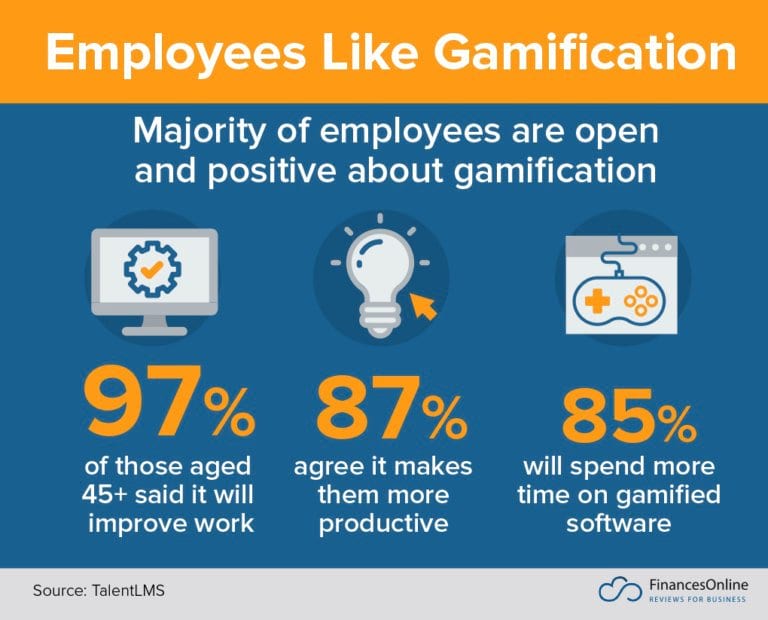
There’s also the inviting element with sales gamification. Spreadsheets and the like are obviously the traditional tools of the salesperson, but they can often be slow, prone to errors, and don’t necessarily inspire your employees to engage with them. Salesforce gamification plans are dynamic, inviting, and offer a clear view of sales performance.
If you’re looking to encourage your sales team to work harder, then sales gamification is a great and effective way to encourage them and let your team feel like the work they’re doing is getting noticed. But it’s not only your salesforce who can benefit from sales gamification.
Sales gamification and lead generation
B2B sales lead generation is a tricky but incredibly important business. There are all sorts of different types of B2B leads that you should familiarize yourself with, as knowing the differences and how to sort them through can alter your own approach to sales.
Lead generation can be a bit of a headache. But by using sales gamification, you can actually make it fun. Long considered a boring and uncomfortable process, lead generation is essential to furthering the prospects of a business.
Gamification makes it an enjoyable experience for both the sales team and the consumer. So what are some good gamification ideas for lead generation?
One of the most traditional applications of salesforce gamification in lead generation is quizzes. You can interact with consumers with a series of questions, then to reveal their results, you can ask for an email address.

The shopkeeper method is also a great way of generating leads using sales gamification. By asking the consumer or the customer about their personal tastes, you can easily generate leads.
How does gamification help in increasing lead conversions down the sales funnel?
It’s all well and good gamifying your sales and generating these leads. But how do you convert these leads into sales, and end up with actual clients?
If you use fun game design elements in your marketing campaigns, as well as incorporating things like inclusiveness, achievement, competition and rewards, you are giving your potential clients a whole load of incentives to interact with your brand or your business.
Sales gamification creates ongoing engagement with your leads and will help you to nurture relationships with these consumers, as well as lead them through the journey of a buyer and retain their loyalty.
Most importantly, this incentivization of salesforce gamification will help to convert people from being potential customers into being actual customers. The more engaged the leads are, the higher the lead conversion rate is.
Personalization is also a really important tool in sales gamification. An Epsilon research report looking at personalization and the effect it has on marketing performance found that 80% of consumers were more likely to do business with a business if they can offer personalized experiences.
Ways you can gamify your sales process
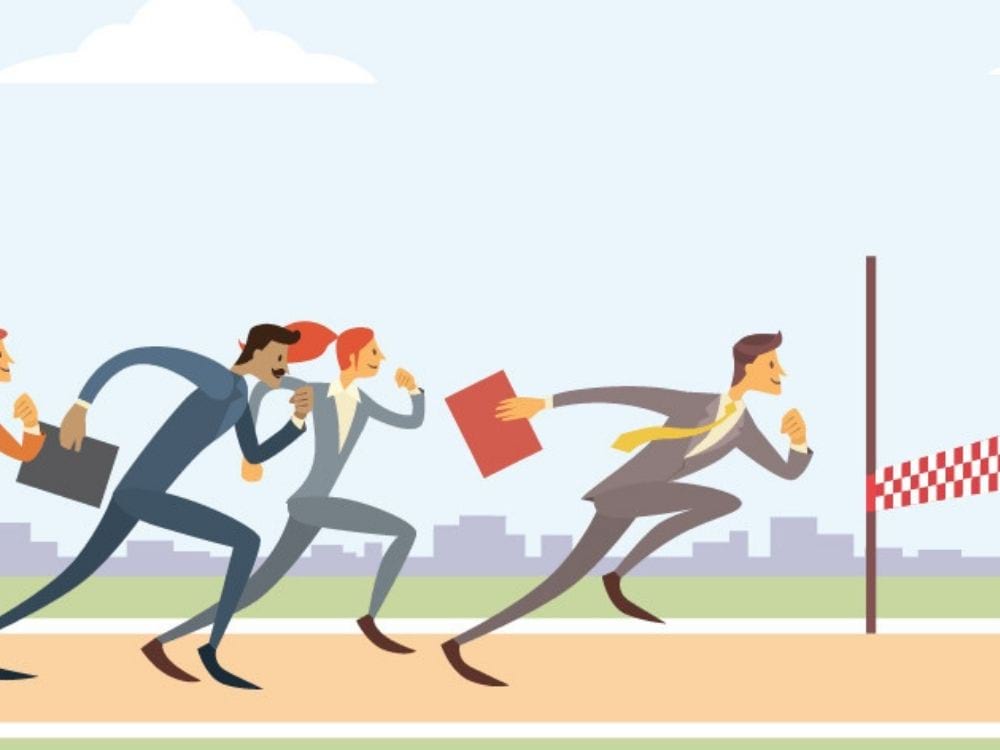
So now we have a good idea on how you might be able to use salesforce gamification in lead generation and hopefully push that over into lead conversion. How can you gamify your sales process, though?
By gamifying your sales process, you can onboard reps faster, improve your team’s morale and encourage friendly competition. And it really works too – sales managers who implemented gamification into their sales team said that they saw an 11% to 50% improvement in sales performance. Below we go through some gamification in business examples:
Contests
Everyone loves a contest. And hosting a sales competition can give your team that extra push to meet their quota. Competitions lasting for 3 or 4 days held at the end of the sales month or quarter have been proven to work best, and having an incentive to work for can also give your team that extra push. Plus, it makes an otherwise stressful time of the year quite fun.
Challenges
Another great sales gamification idea to implement in your business is the element of challenge. These could be asking your team to complete a specific sales certification or to increase their rate from their last quarter. You should try and make these achievable, but not too easy. You should also offer some guidance and inspiration, but leave plenty of room for their own creativity. This can result in great ideas and huge results.
Leader boards
Leader boards again inspire your sales team to push to move higher up. They can also see how they compare to their colleagues as well. You can use all sorts of different metrics to display these top performers too. The excitement of winning can drive your entire business forwards, across all divisions.
Badges
Using sales gamification in the form of badges is a great method for your newer employees. Badges are really good prizes to award when a new salesperson completes certain tasks or achieves a certain milestone. They can make them feel like they’ve really achieved something and can motivate them to get the next badge.
Step by step: How to gamify your sales process
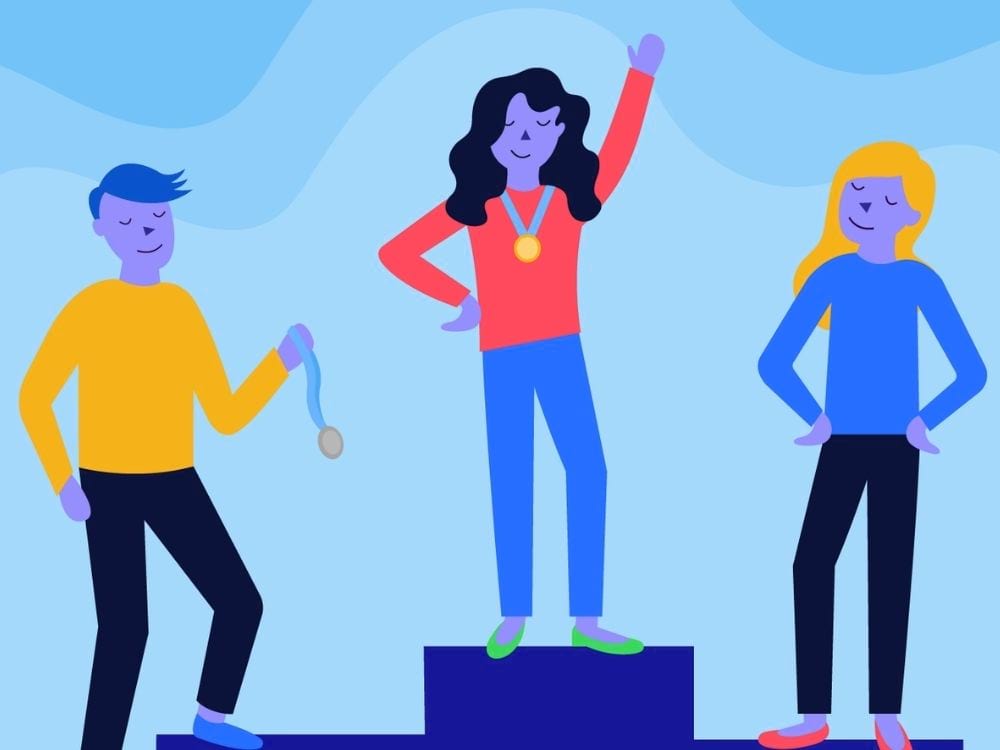
The process of gamifying your sales isn’t a new concept, but nowadays, there are loads of different providers developing apps that streamline your gamification.
That being said, there are a few steps you should consider taking before you plunge in and gamify your sales process.
Having the right technology
Having a sales automation system can really help streamline your sales gamification. Usually, this comes as part of the Customer Relationship Management (CRM) system – however, there are actually very few CRM systems that can also provide sales gamification. Sales gamification can also help your sales team to adopt new systems.
Track the right metrics
Knowing which metrics to track once your CRM system and sales gamification process is all set up will be really important. It’s effectively working backwards from your desired goals, and knowing which metrics drive the most sales. Considering these will show you what drives your business.
Improve sales data integrity
Maintaining your business’ data takes a fair amount of time, but it leads to high levels of data integrity. Your sales team would certainly rather close deals than enter customer details, so sales gamification can come to the rescue here too. If you offer rewards for clean records, your team will be more willing to keep clean and accurate data.
Improve sales forecasting
Improved sales forecasting is directly linked to data integrity. With cleaner data, your sales pipeline becomes more accurate, and so will your capacity to accurately forecast any future sales. Forecasts can also inspire your team to work harder – either to push for a strong commission month or to beat predictions.
Top 5 tools for sales gamification
So there are the basics of sales gamification. If you need more convincing about how effective it is and how it can change the fortunes of your business, this survey carried out in 2019 has some astounding figures.
89% of employees surveyed said that salesforce gamification made them feel more productive at work, with around the same percentage saying that they felt happier in the workplace too. So it’s definitely something you might want to consider.
You may be wondering what tools are out there to introduce a sales gamification element to your business. We go through the top 5 tools you can use for sales gamification.
Hoopla
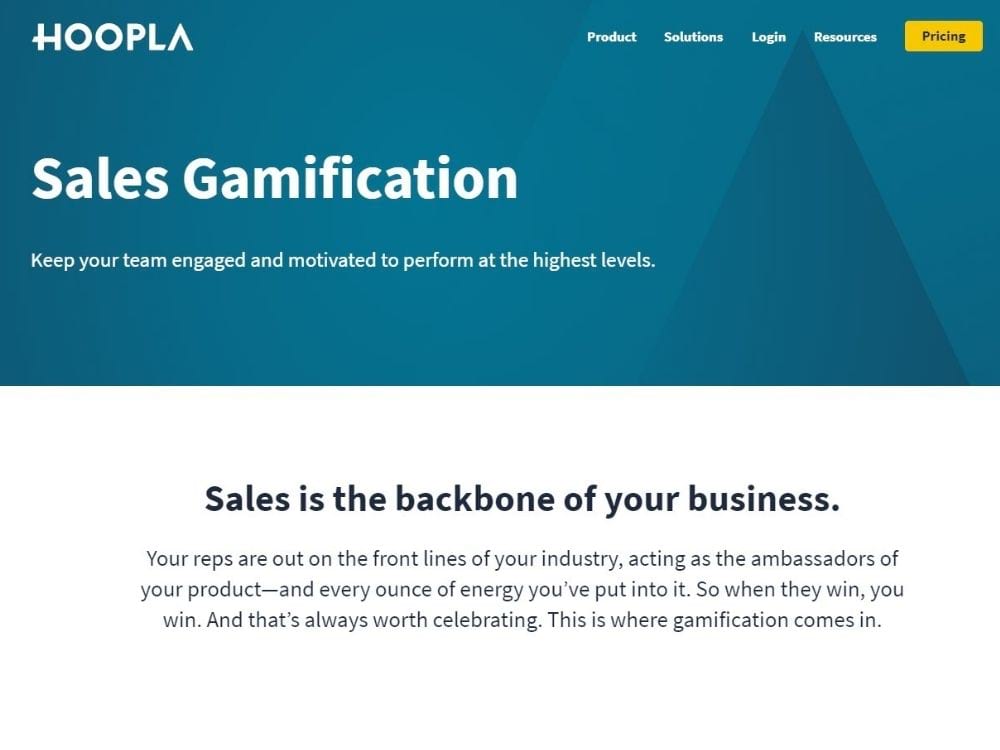
A classic piece sales gamification software, Hoopla motivates your employees by transforming some of the less interesting aspects of their jobs into competitions. You can create leaderboards to publicly display who’s doing best, and use positive reinforcement to reward productive employees.
Centrical
Centrical makes performance management software, as well as software for employee engagement. Centrical stands out as it doesn’t focus so much on leaderboards – it makes each employee the central figure, encouraging them to complete challenges and learn. They can earn points and level up as well – plus you can add real-world prizes and incentives.
Ambition
Ambition offers up six different tools – goals, TVs, coaching, scorecards, contests and dashboards. These tools are designed to help your sales team close more deals, and the software also records your employees’ progress. You can also set custom goals too, and the coaching setting lets you format coaching sessions with individual employees.
Gleam
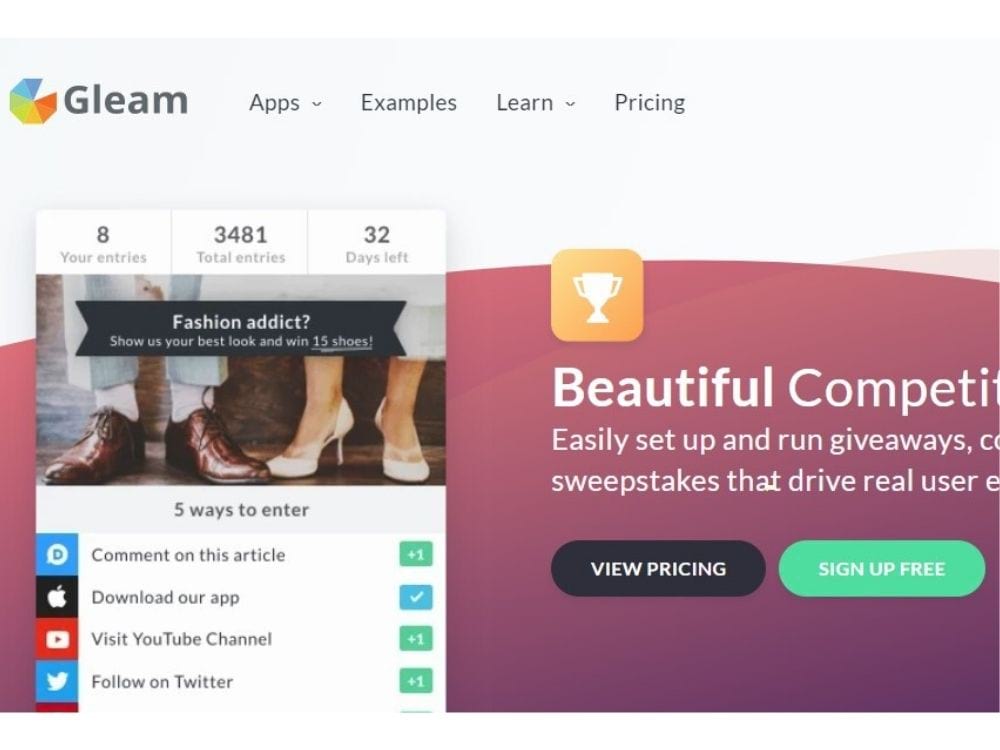
There are four different apps available from Gleam – Competitions, Rewards, Gallery and Capture. These each let you create competitions, give away rewards, and capture email subscribers. There’s a strong focus on incentives here, as well as customization. Gleam also integrates with hundreds of different marketing and social apps too.
Influitive
This piece of sales gamification software has more of a focus on the consumer. It basically boosts your company’s advocate marketing efforts and incentivizes customers to complete surveys, do tutorials, write reviews and post in forums. It makes rewarding your customers much easier too. Plus, you can even keep track of how much these campaigns make.
Best examples of sales gamification
It’s easy to talk about generalized examples of sales gamification. But what about sales gamification in the real world? Some of the best examples of sales gamification have resulted in huge sales upticks for businesses. Here’s a couple of the best sales gamification in business examples.
KFC
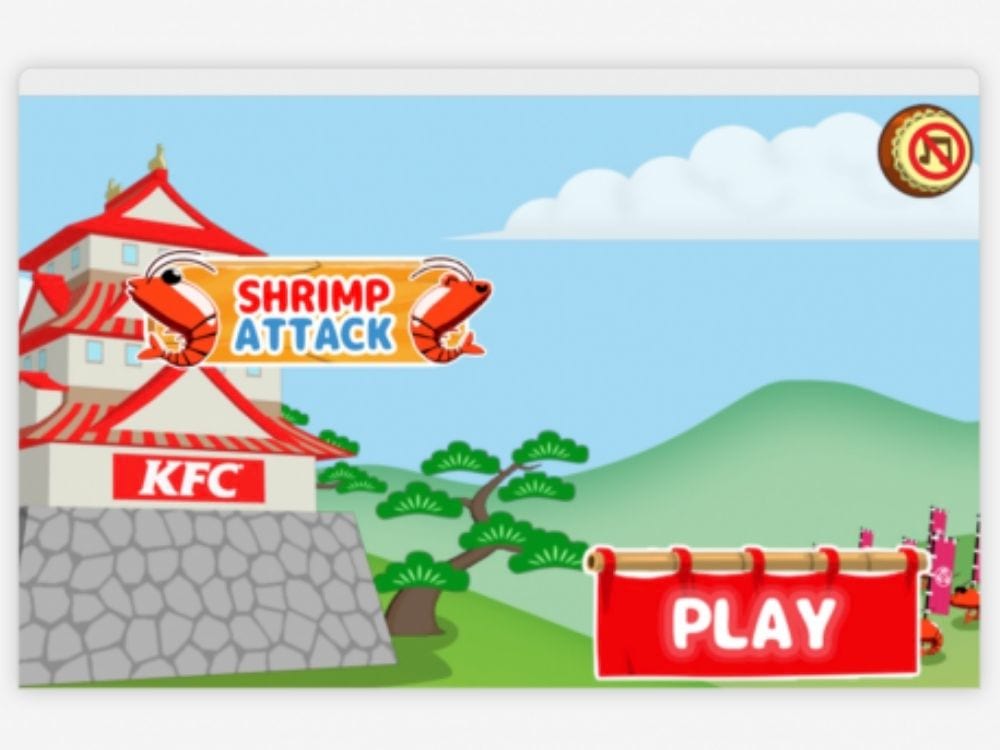
One sales gamification in business examples is that of KFC. KFC Japan created a marketing campaign that not only informed consumers but also encouraged them to try out a new line of shrimp-themed products. They created a mobile game that involved swatting shrimps.
It ended up being so successful, KFC had to cut the campaign time in half to stabilize supply and demand. They also had an incentive in the form of a voucher, if you got to a certain stage of the game.
M&Ms

M&Ms released a puzzle app that bought in 25,000 new likes for the company on Facebook. You basically had to try and spot a pretzel shape hidden in an image that was full of M&Ms. As it was so simple and straightforward, they noted that people interacted with it multiple times, and shared it with others as well.
Final thoughts
Sales gamification can boost your sales and get the most out of each member of your sales team if used in the right way. It all comes down to understanding the motivations of each individual member of your sales team, as well as employing game elements in a proper and constructive way.
It’s worth noting that effects won’t be noticeable overnight. Sales gamification works best as a part of a long-term strategy, and a focus on targeting behavioral change should be the primary objective – the entertainment side of things is an added plus.
So whatever approach you take, or tool you use for your sales gamification, make sure that you know it will empower your employees, and result in more sales.

